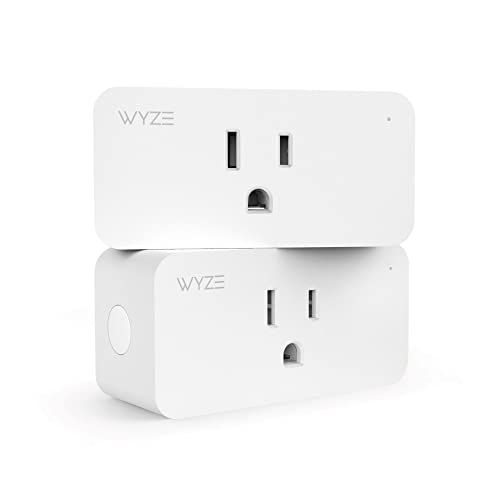Key Takeaways
- Upgrading to smart plugs and power points is a cost-effective way to make any device in your home “smart.”
- Power points are a better option than plugs because they take up less space and won’t block other outlets, though a smart plug is far more versatile and easy to install yourself.
Looking for a smart home upgrade? Get some smart plugs or better yet switch out your old power points with connected ones. It could be the most cost-effective upgrade you can make.
What Are Smart Plugs and Smart Power Points?
Smart plugs and power points are some of the simplest smart home devices, with simple on-off functionality. Smart plugs connect to existing wall sockets while smart power points replace your wall sockets entirely. From there, you can connect any device and control whether or not it gets power using an app, smart home assistant, or automation.
Most products of this type retain “dumb” functionality, allowing you to turn them on or off using a power button. It’s important to make sure you aren’t taking away functionality or becoming entirely reliant on an app or smart home system.

Wyze Smart Plugs
$17 $20 Save $3
An easy way to control plugs with ease without having to get up.
Smart plugs and power points give you more options in terms of controlling your devices. You can speak directly to an assistant to turn on a light, automate a coffee maker to start making coffee in the morning, or simply use your phone to make sure a device is turned off (even when you’re away from home).
Why Bother Upgrading Plugs and Power Points?
As long as whatever you’re plugging in works smoothly with simple on-off functionality, smart plugs, and power points are solid upgrades for your home. You can effectively make any dumb device smart, so long as the device will start performing its function as soon as it’s powered on.
The most obvious usage here is lighting, converting standard lamps and spotlights into smart lights. You can bark at Siri or Alexa to “turn on the living room lights” while you shuffle through the door with your arms full of shopping, or you could automate the lights to just turn on at dusk so that your house is well-lit when you arrive home.
Of course, anything you can plug in should work. This includes fans, dehumidifiers, air purifiers, network equipment, coffee makers, chargers, festive decorations, night lights, garden lighting, heaters, and slow cookers. If you use a tumble dryer, you could use a smart plug to make sure it’s off when you’re away from home (since these can pose a fire risk).
This means that you can keep your old devices until they need to be replaced, rather than replacing them with new ones just to get smarter functionality. Smart plugs and power points also happen to be one of the cheapest smart home upgrades you can perform.
Smart Power Points Are the Better Choice
Smart power points replace existing “dumb” power points so that you can control them with your smart home platform of choice. Anything you plug in will work, and you can add relevant labels within your chosen smart home system of choice.
Smart plugs are also useful, but even some of the best smart plugs are so big that they can block adjoining power points. This is a problem that you shouldn’t have with smart power points, which are built like existing power points to accommodate standard plugs.
Smart power strips (or power boards) are another option you might want to explore if you’re encountering an issue like this. Just make sure that any such products you’re buying offer individual control of outlets (otherwise it’s an all-or-nothing affair, with all devices on or off at the same time).
They’re Better Than Smart Bulbs
Smart bulbs are cool, but they also tend to be more expensive and bulkier than standard bulbs. You might not find a smart bulb with the right fitting, color temperature, or brightness. You might also find that low-energy bulbs are more efficient. Switching to a smart power point instead means you can keep your existing lamp and bulb, and stick to more affordable bulbs if you need a replacement.
And if you decide to rearrange your living spaces, you can repurpose your smart power point or smart plug for other devices. A single smart plug or power point could allow you to experiment with any number of devices. Just make sure to get an electrician to install power points and always comply with local safety laws.
Pick the Right Smart Home Product
By far the most important thing to remember is to match your smart plug or smart power point to your smart home infrastructure. If you’re all-in on Google Home, Amazon Alexa, or Apple HomeKit, make sure that your plug works with that system. Some products work with multiple smart home setups, others don’t.

